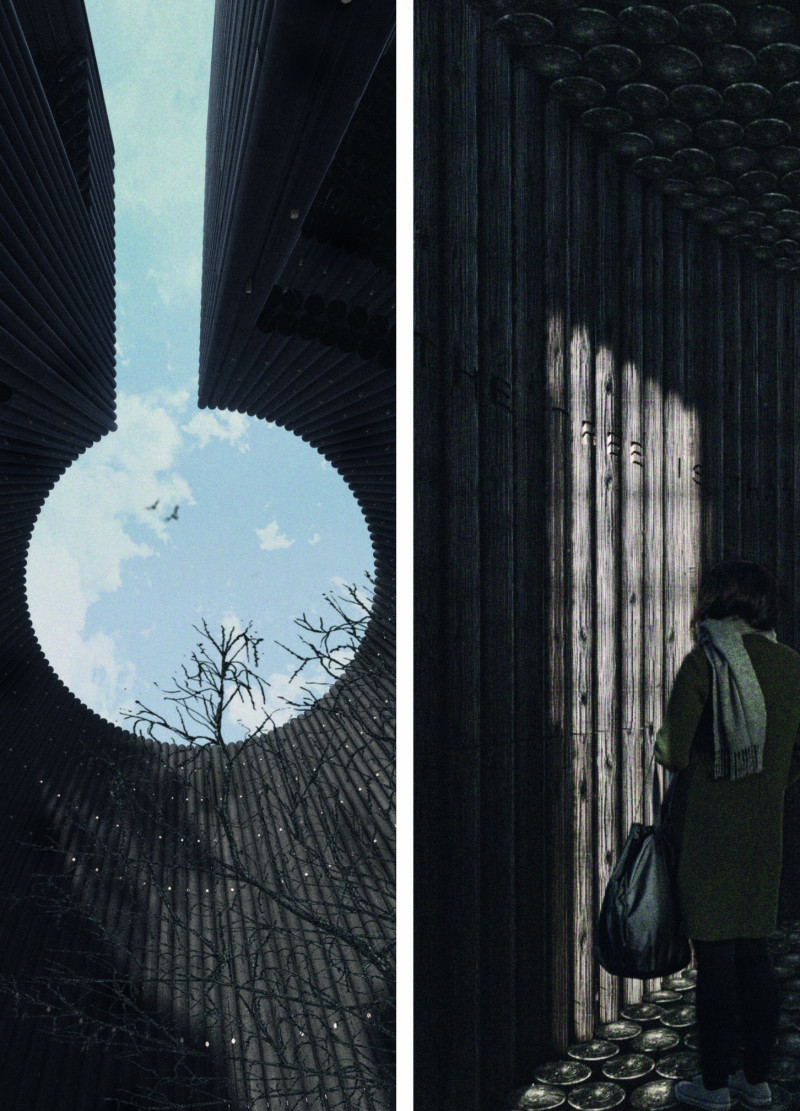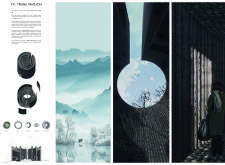5 key facts about this project
The TP Trunk Pavilion is designed to represent the structure of a tree trunk while creating a meaningful experience for visitors. Located in a natural environment, the pavilion features a circular path that reflects the rings of a large trunk. It invites people to connect with the natural surroundings and explore the importance of trees and their ecosystems. The design highlights the unique qualities of wood and encourages contemplation of its role in nature.
Conceptual Framework
-
The design concept focuses on the contrast between rough and smooth wood surfaces. Visitors start by experiencing the exterior bark, intentionally left in its natural state to emphasize texture and authenticity. They then move into the sapwood, where a sanded finish offers a gentle touch. This progression makes the experience more engaging and allows visitors to connect with the various layers of a tree.
Structural Characteristics
-
The structure is built using fence posts that are ten centimeters in diameter and two meters tall, arranged vertically for strength. These posts are connected with visible wood dowels, making the construction method clear and demonstrating skilled craftsmanship. The materials used are carefully chosen to highlight the beauty and durability of wood, blending naturally into the surrounding landscape.
Sustainable Design Approach
-
A key aspect of the pavilion is the use of posts sourced from tree branch waste. This choice symbolizes the vessels found within wood on a microscopic level. By reusing materials that might otherwise be discarded, the design shows a commitment to sustainability. The building also contributes to carbon absorption, presenting a view of how architecture can work alongside nature to support conservation.
Central Element
-
At the center of the pavilion is a tree that represents younger growth, echoing the work of sculptor Giuseppe Penone. This tree serves as a focal point within the structure, strengthening the bond between the building and the natural environment. The pavilion functions not only as a space for reflection but also as a viewpoint, allowing visitors to observe the surrounding landscape and understand the importance of biodiversity.
The design successfully combines raw and smooth wood textures, inviting visitors to experience the beauty of trees and their role in our world. Each layer and detail offers a tangible connection to nature, creating a space where architecture and the environment coexist.



















































